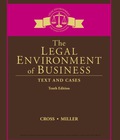
(a)
Case summary: Person B owned a single-family residential lot in the county. The lot was adjacent to the railway road and the county acquired the right to the way from the railroad. The predecessor of B’s property had constructed the fence and shed on the railway road. The county court ordered him to remove the fence and the shed because it disturbed the right of way. He argued in the appellate court that the fence had been in the way for the last twenty years. The appellate court ultimately concluded the case that B had a credible claim for adverse possession. After, the appellate court reversed its decision.
To find: Parties and the conflict in the given case.
(b)
Case summary: Person B owned a single-family residential lot in the county. The lot was adjacent to the railway road and the county acquired the right to way from the Railroad. The predecessor of B’s property had constructed the fence and shed on the railway road. The county court ordered him to remove the fence and shed because it disturbed the right of way. He argued in the appellate court that the fence had been in the way for the last twenty years. The appellate court ultimately concluded the case that B had a credible claim for adverse possession. After, the appellate court reversed its decision.
To find:Requirement of the rule of law on which the outcome of the case depends.
(c)
Case summary: Person B owned a single-family residential lot in the county. The lot was adjacent to the railway road and the county acquired the right to the way from the railroad. The predecessor of B’s property had constructed the fence and shed on railway road. The county court ordered him to remove the fence and shed because it disturbed the right of way. He argued in the appellate court that the fence had been in the way for the last twenty years. The appellate court ultimately concluded the case that B had a credible claim for adverse possession. After, the appellate court reversed its decision.
To find:Exception to the rule and its non-applicability in the given case.
(d)
Case summary: A person B owned a single-family residential lot in the county. The lot was adjacent to the railway road. Three years later, the county acquired the railway road for the right to way and established the hiker bike route. The previous owner of B’s lot had constructed the fence and shed on the railway road. The county court ordered him to remove the fence and shed because it disturbed the right of way. He argued in the appellate court that the fence had been in the right of way for the last twenty years. The appellate court ultimately concluded the case that B had a credible claim for adverse possession. After, the appellate court reversed its decision.
To find: The judgment by applying the rule of law.
Want to see the full answer?
Check out a sample textbook solution
Chapter 26 Solutions
EBK THE LEGAL ENVIRONMENT OF BUSINESS:
- Hello tutor solve this question and accounting questionarrow_forwardYao Ming Traders has the following transaction data: beginning inventory $9,200, purchases $70,000, purchase returns $3,000, freight-in $4,100, and ending inventory $12,500. Cost of goods sold is? a) $67,800 b) $70,300 c) $68,500 d) $66,800arrow_forwardPlease provide the answer to this general accounting question using the right approacharrow_forward
- I am trying to find the accurate solution to this general accounting problem with the correct explanation.arrow_forwardCan you help me solve this general accounting question using the correct accounting procedures?arrow_forwardWhat is the amount of the gross profit that would be reported the absorption costing income statement?arrow_forward
- JohnPastries purchased baking equipment for $60,000. The equipment has a salvage value of $8,000 and an expected useful life of 8 years. Using the declining balance method at double the straight-line rate, calculate the first year's depreciation expense.arrow_forwardCan you solve this general accounting problem using accurate calculation methods?arrow_forwardGeneral Accountingarrow_forward
 Purchasing and Supply Chain ManagementOperations ManagementISBN:9781285869681Author:Robert M. Monczka, Robert B. Handfield, Larry C. Giunipero, James L. PattersonPublisher:Cengage Learning
Purchasing and Supply Chain ManagementOperations ManagementISBN:9781285869681Author:Robert M. Monczka, Robert B. Handfield, Larry C. Giunipero, James L. PattersonPublisher:Cengage Learning
